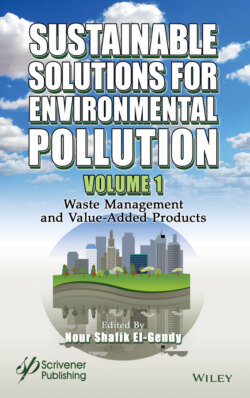Читать книгу Sustainable Solutions for Environmental Pollution - Группа авторов - Страница 26
1.4 Challenges and Future Outlook
ОглавлениеStill, several challenges must be addressed before further development or scaling-up of the EF system for biofuel and value-added chemical synthesis (e.g., lipids, acetoin, PHB, L-lysine). To start with, more explorations of different working conditions, such as temperature, pH, and working electrode potentials are required for the commercialization of the EF system. General mechanism and fundamental knowledge on bacterial strains and their impact on the EF performance are still lacking. For instance, Bursac et al. (2017) were not able to identify the reasons behind the positive impact on anode cell densities in their EF system due to -prophage deletion during acetoin production. Furthermore, Lai and Lan (2020) stated that an optimal energy input should be evaluated in EF, where their EF performance was reduced due to higher current input inhibiting their bacteria (e.g., Ralstonia eutropha H16). High electrical current supply can cause direct cell damage (sometimes resulting in cell death) via electroporation, production of reactive oxygen species, or generation of other toxic substances (Lai & Lan, 2020). Hence, more experimental evidence is needed for the selection of optimal energy input for the EF system. Particularly, minimal information is available on the complex interactions among electrode polarization, substrate composition, and microbial consortia.
Also, fundamental understandings, such as (1) interactions between fermentative bacteria; (2) dissolved redox couples of the medium; and (3) interactions between fermentative bacteria and the surface of the electrodes via different electron transfer mechanisms, remains as insufficient to clearly describe the effectiveness of the EF system (Lai and Lan, 2020; Moscoviz et al., 2016; Xafenias et al., 2017). The interactions between microbial cells and electrodes, particularly EET mechanisms for electron transfer from bacteria to electrode, have been extensively studied for various MXCs, while electron transport from the electrode to microbial cells is relatively unexplored (Gong et al., 2020; Kracke et al., 2018). For EF-based production of some specific value-added products (Table 1.1), an in-depth understanding of cathodic EET mechanisms (e.g., electron uptake) should be further investigated for successful engineering cathodic EF process.
In recent years, the utilization of waste feedstocks for biofuels productions (e.g., bioethanol, biodiesel, etc.) has received significant attention worldwide. Electro-fermentation carries an excellent potential for regulating fermentation pathways and enhancing productivity and yield of target value-added products. However, except for a few studies, most of the EF studies utilized synthetic model compounds rather than real feedstocks. For instance, further research would be needed for developing a sustainable crude glycerol-based EF process. Crude glycerol from the biodiesel production process may contain a considerable amount of impurities (e.g., metals and residual alcohols) (Xafenias et al., 2015); the biodiesel process uses excess methanol to promote product yields (Dhar and Kirtania, 2009). Therefore, the effects of those impurities on EF should be further studied for practical application. Thus, the feasibility of utilizing waste biomass has yet to be demonstrated on a lab-scale to reach a considerable state for further pilot, scale-up, and commercialization. With more future experimental evidence, the EF system can demonstrate such high potential to facilitate the field-scale productions of biofuels and chemicals with only small electrical energy input.
